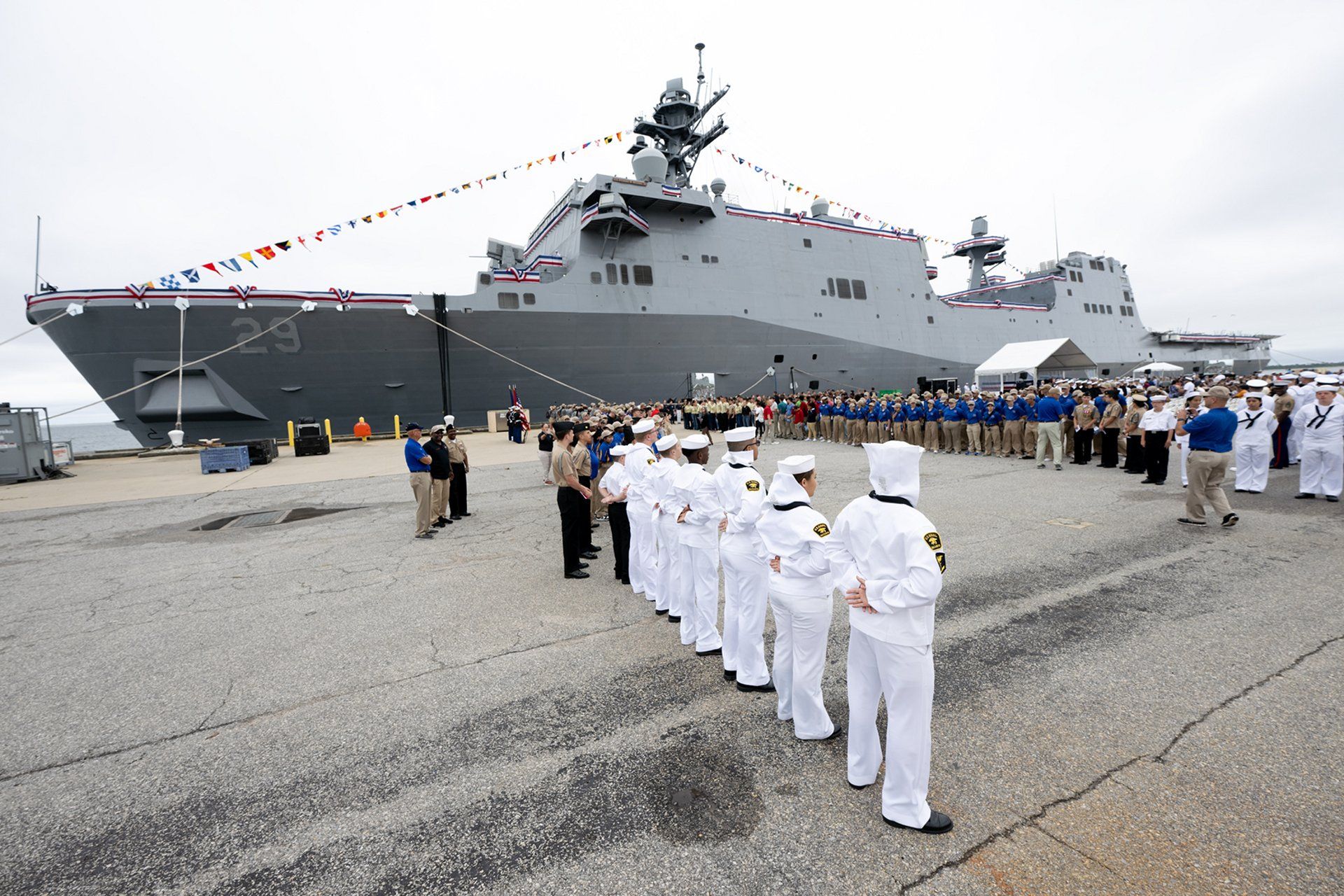Breaking News
USS Richard M. McCool Jr. LPD 29 commissioned at Naval Air Station Pensacola.
According to information published by the US DoD on September 9, 2024, the USS Richard M. McCool, Jr. (LPD 29), a San Antonio-class amphibious transport dock, was officially commissioned on September 7 at Naval Air Station Pensacola, Florida.
Follow Army Recognition on Google News at this link

Commissioning ceremony of the USS Richard M. McCool, Jr. (Picture source: Dvids)
These vessels are designed to meet the ever-changing demands of modern naval operations, blending advanced technologies with a capacity to execute a wide range of missions.
One critical aspect of the San Antonio-class is its ability to support disaggregated operations. Unlike older ships that primarily operated in close proximity to one another, these LPDs can operate independently if required. This operational autonomy is crucial for modern naval strategy, where units may need to respond rapidly and flexibly to emerging crises, from amphibious assaults to humanitarian aid and disaster response. Each vessel can support more than 800 Marines, their equipment, and various landing craft, making them key enablers of Marine Expeditionary Units (MEUs), which often operate far from U.S. shores for extended periods.
A standout feature is the class's ability to accommodate Landing Craft Air Cushion (LCAC) and other amphibious vehicles within its large well deck. This capability allows the rapid deployment of ground forces and supplies from ship to shore under various combat conditions.
The Flight II variants of the San Antonio class—currently in construction—will further refine these capabilities. Designed to replace the aging Whidbey Island-class dock landing ships (LSDs), the Flight II vessels maintain many of the features of the original Flight I ships but include several upgrades that enhance operational flexibility. These enhancements include improved aviation support, better medical facilities for larger casualty care, and the ability to handle more diverse operations, from amphibious assaults to humanitarian missions.
From a survivability standpoint, the San Antonio-class incorporates several technologies designed to reduce vulnerability in high-threat environments. The ships feature stealthier hulls, advanced radar and sensor systems, and integrated command and control networks, making them more resilient in scenarios involving anti-ship missiles or other adversary capabilities.
Another important factor in the design of these ships is their focus on supporting joint and coalition operations. The San Antonio-class is capable of acting as a command-and-control hub for multinational naval forces.


























